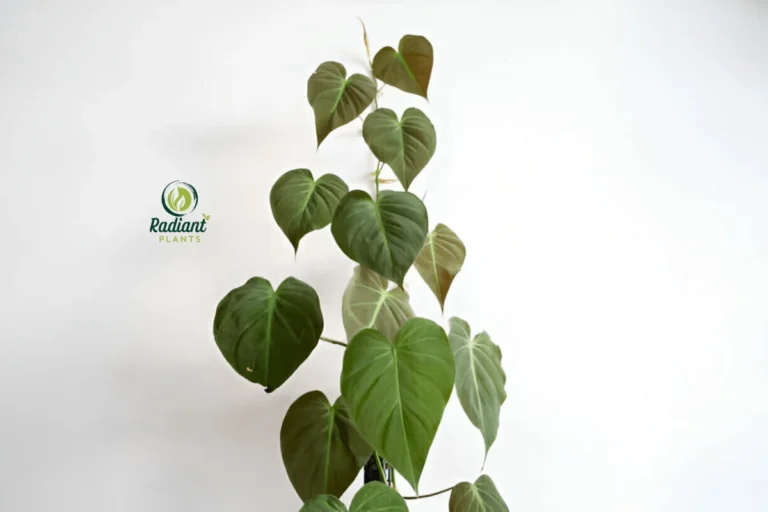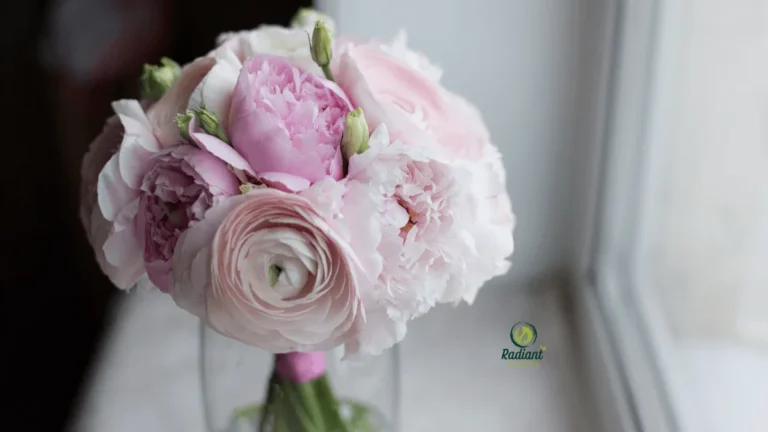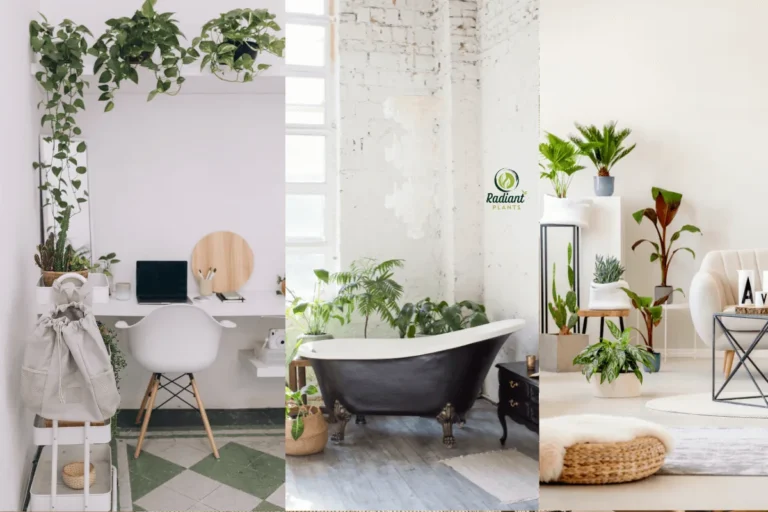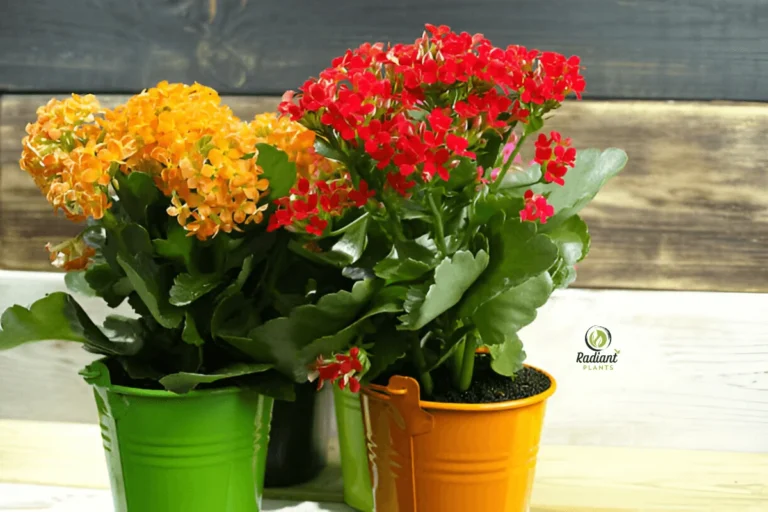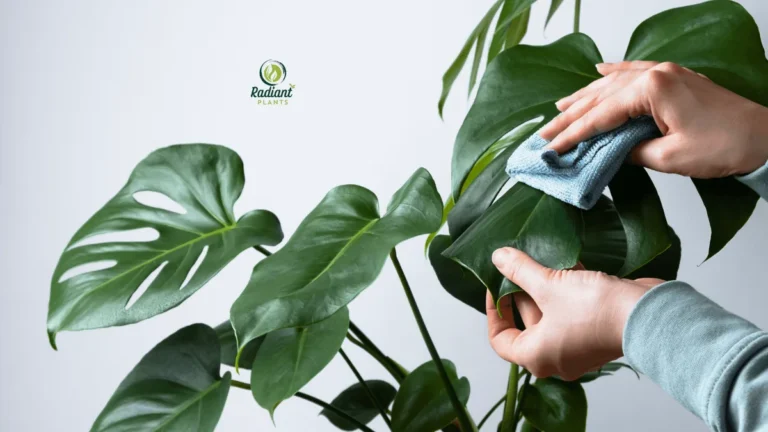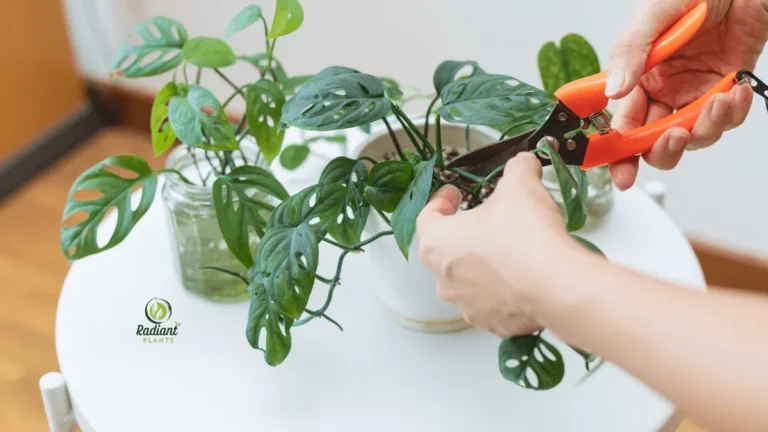Best Fertilizer for Sick Plants: 6 Proven Solutions
Is your favorite houseplant looking sad and droopy? Don’t panic! Finding the best fertilizer for sick plants can turn your struggling green friends into thriving beauties again. When your indoor plants start showing signs of distress, the right fertilizer can work like magic to revive them.
Many plant parents face a daunting moment when their beloved houseplants begin to decline. The good news is that with the right knowledge and the best fertilizer for sick plants, you can nurse almost any plant back to health. This guide will walk you through six proven solutions that have helped countless plant lovers save their green companions.
Table of Contents
Table of Contents
Signs Your Indoor Plants Need Emergency Fertilizer Help
Knowing when your plants are crying for help is the first step to successful recovery. Let’s explore the warning signs that tell you it’s time to find the best fertilizer for sick plants.
Yellow Leaves and Nutrient Deficiency Symptoms
Yellow leaves are often the first red flag that something’s wrong with your houseplants. When leaves start turning yellow from the bottom up, your plant is usually telling you it’s hungry for nutrients. This happens because plants move nutrients from older leaves to newer growth when they’re starving.
Look for these specific yellowing patterns:
- Bottom leaves are turning yellow first (nitrogen deficiency)
- Yellow leaves with green veins (iron deficiency)
- Random yellow spots or patches (potassium deficiency)
The yellowing might start slowly, but it can speed up quickly if you don’t act fast. This is when finding the best fertilizer for sick plants becomes crucial for your plant’s survival.
Stunted Growth and Poor Plant Health
Healthy houseplants should show steady growth during their growing season. If your plants have stopped growing or are producing tiny, weak leaves, they’re probably not getting enough food. Stunted growth is a clear sign that your plant needs the best fertilizer for sick plants to get back on track.
Other signs of poor plant health include:
- Weak, droopy stems
- Leaves that feel thin or papery
- No new growth for months
- Smaller leaves than usual
- Loss of vibrant color
When to Act Fast with the Best Fertilizer for Sick Plants
Some situations require immediate action. If you notice multiple symptoms happening at once, don’t wait to start treatment. The best fertilizer for sick plants works fastest when you catch problems early.
Act immediately if you see:
- Rapid leaf drop
- Leaves are turning yellow and falling off daily
- Brown or black spots spreading quickly
- Complete growth stoppage during the growing season
- Wilting despite proper watering
Understanding Why Plants Get Sick from Poor Nutrition
Before we dive into solutions, it helps to understand why plants get sick from poor nutrition. This knowledge will help you choose the best fertilizer for sick plants and prevent future problems.
Common Nutrient Deficiencies in Indoor Plants
Indoor plants face unique challenges that outdoor plants don’t have. Limited soil, artificial lighting, and controlled environments can create specific nutrient problems. Understanding these deficiencies helps you pick the best fertilizer for sick plants.
| Nutrient | Deficiency Signs | Common in Indoor Plants |
|---|---|---|
| Nitrogen | Yellow lower leaves, stunted growth | Very common |
| Phosphorus | Purple leaves, poor flowering | Moderate |
| Potassium | Brown leaf edges, weak stems | Common |
| Iron | Yellow leaves with green veins | Very common |
| Magnesium | Yellow between leaf veins | Common |
| Calcium | Brown leaf tips, weak growth | Moderate |
How Over-fertilizing Can Make Plants Sick
Surprisingly, too much fertilizer can make plants just as sick as too little. Over-fertilizing burns roots and prevents plants from absorbing water properly. This is why choosing the best fertilizer for sick plants means finding the right balance, not just the strongest product.
Signs of over-fertilization include:
- Brown, crispy leaf edges
- Wilting despite moist soil
- White crust on the soil surface
- Excessive green growth with no flowers
- Root burn or blackened roots
Soil pH and Nutrient Absorption Problems
Even with the best fertilizer for sick plants, your efforts might fail if your soil pH is wrong. Most houseplants prefer slightly acidic to neutral soil (pH 6.0-7.0). When pH is off, plants can’t absorb nutrients properly, no matter how much fertilizer you give them.
Test your soil pH with:
- Digital pH meters
- pH test strips
- Soil test kits from garden centers
Solution 1: Liquid Kelp Fertilizer for Rapid Recovery
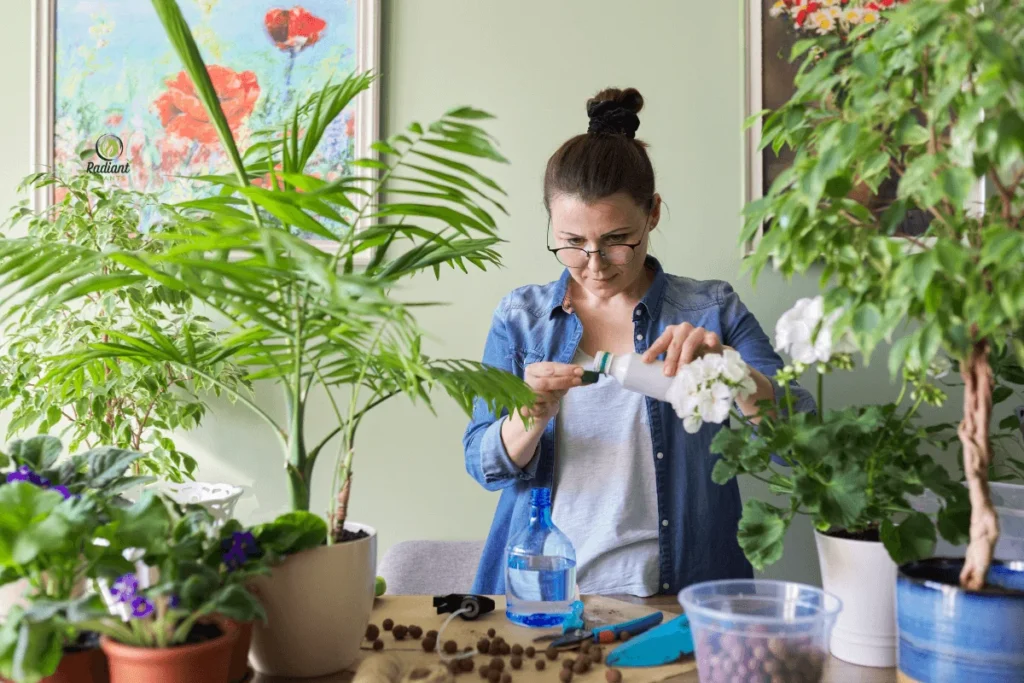
Our first proven solution for the best fertilizer for sick plants is liquid kelp fertilizer. This ocean-based wonder works incredibly fast to revive struggling houseplants.
Why Kelp Works as the Best Fertilizer for Sick Plants
Kelp fertilizer contains over 70 trace minerals that plants need for healthy growth. Unlike synthetic fertilizers, kelp provides gentle, slow-release nutrition that won’t shock sick plants. The natural growth hormones in kelp help plants recover from stress and start growing again.
Benefits of kelp fertilizer:
- Gentle on stressed plants
- Contains natural growth hormones
- Improves root development
- Enhances disease resistance
- Works quickly but safely
Application Methods for Indoor Plant Care
Using liquid kelp as the best fertilizer for sick plants is simple and safe. Mix one tablespoon of liquid kelp fertilizer with one gallon of water. This creates a mild solution that won’t overwhelm your recovering plants.
Application steps:
- Water your plant lightly first
- Mix kelp fertilizer according to package directions
- Apply the solution until it drains from the bottom
- Empty drainage trays after 30 minutes
- Repeat every two weeks until recovery
Expected Recovery Timeline
Most houseplants start showing improvement within 1-2 weeks of kelp treatment. You’ll notice new growth and greener leaves as the best fertilizer for sick plants works its magic. Full recovery usually takes 4-6 weeks, depending on how sick your plant was initially.
Solution 2: Balanced NPK Fertilizer for Overall Health

The second solution in our best fertilizer for sick plants toolkit is balanced NPK fertilizer. NPK stands for Nitrogen, Phosphorus, and Potassium – the three main nutrients plants need most.
Understanding NPK Ratios for Sick Plants
Balanced NPK fertilizers have equal or similar amounts of all three nutrients. Look for ratios like 10-10-10 or 20-20-20 on the package. These ratios work well as the best fertilizer for sick plants because they address multiple nutrient deficiencies at once.
| NPK Component | What It Does | Deficiency Signs |
|---|---|---|
| Nitrogen (N) | Promotes leaf growth | Yellow lower leaves |
| Phosphorus (P) | Supports root and flower development | Purple leaves, poor blooming |
| Potassium (K) | Strengthens overall plant health | Brown leaf edges |
Top NPK Products for Indoor Plants
When choosing the best fertilizer for sick plants, look for these trusted NPK options:
- Miracle-Gro Indoor Plant Food (1-1-1)
- Jack’s Classic All Purpose (20-20-20)
- Osmocote Smart-Release (14-14-14)
- Schultz All Purpose Plant Food (10-15-10)
How to Apply Without Burning Roots
Sick plants have sensitive roots, so gentle application is key. Always dilute NPK fertilizer to half strength when treating sick plants. This prevents root burn while still providing the nutrition your plants need.
Safe application tips:
- Always water plants before fertilizing
- Use half the recommended dilution rate
- Apply in the morning when plants are most active
- Never fertilize bone-dry soil
- Watch for signs of improvement over burning
Solution 3: Organic Compost Tea for Gentle Healing
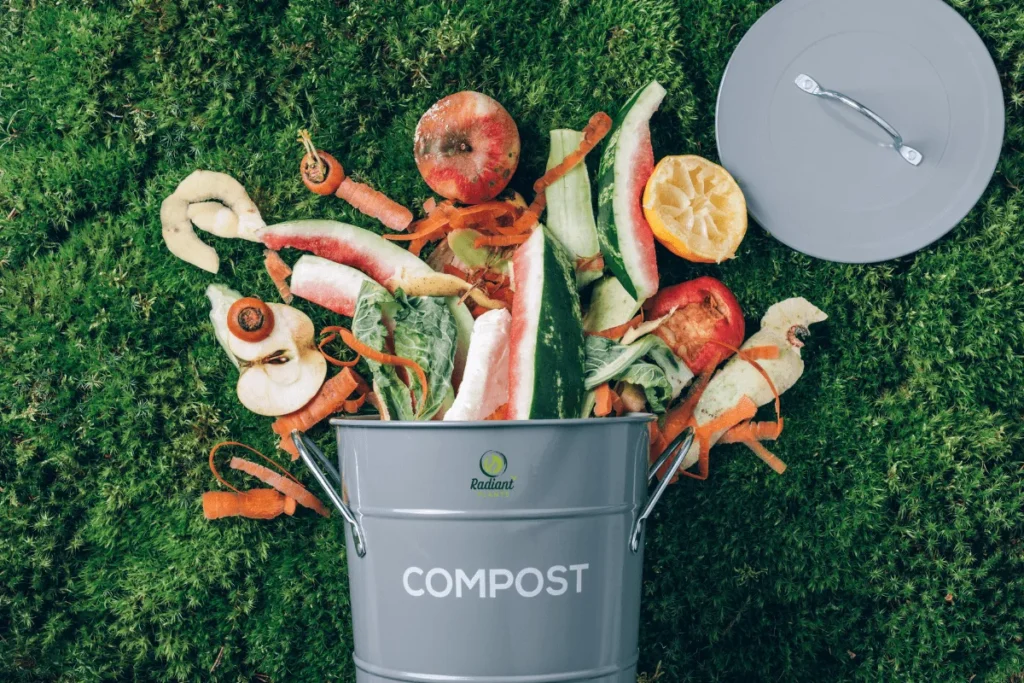
Compost tea ranks high among the best fertilizers for sick plants because it’s incredibly gentle yet effective. This organic solution provides slow-release nutrients while improving soil health.
Making Your Own Plant Recovery Tea
Creating compost tea is like making a nutritious soup for your plants. You can make the best fertilizer for sick plants right in your kitchen using simple ingredients.
Basic compost tea recipe:
- Fill a bucket with 1 gallon of water
- Add 2 cups of finished compost
- Let it steep for 24-48 hours
- Stir occasionally during steeping
- Strain out solids before using
For extra nutrition, add:
- Banana peels (potassium)
- Coffee grounds (nitrogen)
- Eggshells (calcium)
- Fish scraps (phosphorus)
Benefits of Organic Fertilizer for Sick Plants
Organic fertilizers like compost tea work differently from synthetic options. They feed soil microbes, which then feed your plants. This creates a gentler, more natural feeding process that’s perfect for stressed houseplants.
Compost tea benefits:
- Improves soil structure
- Adds beneficial microorganisms
- Provides slow-release nutrition
- Reduces the risk of over-fertilization
- Enhances plant immunity
Best Frequency for Indoor Plant Treatment
Use compost tea as the best fertilizer for sick plants every 7-10 days during recovery. Once your plants start looking healthy again, reduce to monthly applications. This gentle feeding schedule prevents shock while providing consistent nutrition.
Solution 4: Epsom Salt for Magnesium Deficiency

Epsom salt deserves a spot on our best fertilizer for sick plants list because it solves a specific but common problem – magnesium deficiency. This simple remedy can work wonders for certain types of plant sickness.
Identifying Magnesium Deficiency Symptoms
Magnesium deficiency shows up as yellowing between leaf veins while the veins stay green. This creates a distinctive pattern that’s easy to spot once you know what to look for. Many indoor plants suffer from magnesium deficiency, making Epsom salt one of the best options for sick plants.
Look for these magnesium deficiency signs:
- Yellow areas between green leaf veins
- Older leaves are affected first
- Leaves may turn red or purple
- Stunted growth
- Poor flowering
Proper Epsom Salt Dilution Ratios
Using Epsom salt as the best fertilizer for sick plants requires proper dilution. Too much can harm your plants, while too little won’t help. The magic ratio is one tablespoon of Epsom salt per gallon of water.
| Plant Size | Epsom Salt Amount | Water Amount | Frequency |
|---|---|---|---|
| Small plants (4″ pot) | 1/4 teaspoon | 1 cup | Monthly |
| Medium plants (6-8″ pot) | 1/2 teaspoon | 2 cups | Monthly |
| Large plants (10″+ pot) | 1 tablespoon | 1 gallon | Monthly |
Which Indoor Plants Benefit Most
Some houseplants love magnesium more than others. These plants often show dramatic improvement when treated with Epsom salt, as the best fertilizer for sick plants:
- Roses
- Peppers
- Citrus trees
- Palms
- Ferns
- African violets
Solution 5: Fish Emulsion for Nitrogen Boost
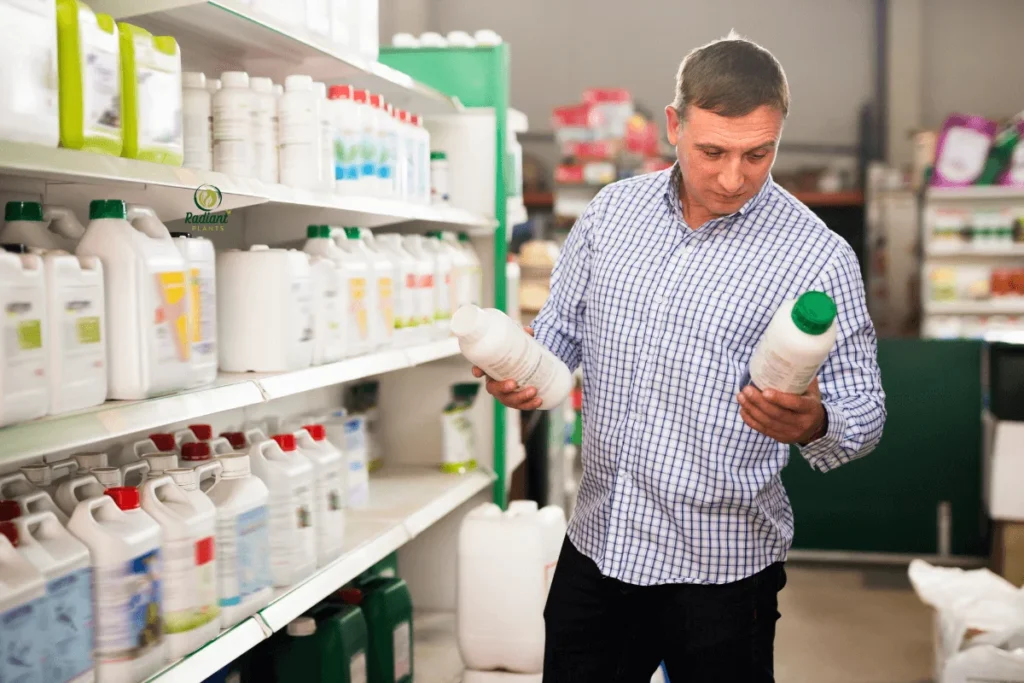
Fish emulsion might smell funny, but it’s one of the best fertilizers for sick plants when nitrogen deficiency is the problem. This organic option provides quick-acting nitrogen that plants can use immediately.
Why Fish Emulsion is Ideal for Sick Plants
Fish emulsion works so well as the best fertilizer for sick plants because it provides readily available nitrogen in a form that plants can absorb quickly. Unlike synthetic fertilizers, fish emulsion also adds organic matter and beneficial micronutrients.
Fish emulsion advantages:
- Fast-acting nitrogen source
- Contains trace minerals
- Improves soil biology
- Low risk of burning plants
- Organic and natural
Odor Management for Indoor Use
The biggest challenge with using fish emulsion as the best fertilizer for sick plants indoors is the smell. Here are proven ways to minimize odors while still getting great results:
Odor reduction tips:
- Apply outdoors and bring plants back in after a few hours
- Mix with coffee grounds to mask the smell
- Use only in well-ventilated areas
- Apply in the evening when windows can be opened
- Choose deodorized fish emulsion products
Application Schedule for Best Results
Use fish emulsion as the best fertilizer for sick plants every 2-3 weeks during the growing season. For sick plants, start with half-strength applications until you see improvement, then gradually increase to full strength.
This Fertilizer Is My SECRET WEAPON For A Healthy Productive Garden!
Solution 6: Specialized Recovery Fertilizer Blends

Our final solution for the best fertilizer for sick plants involves commercial products designed specifically for plant recovery. These specialized blends combine multiple nutrients and growth enhancers in one package.
Commercial Plant Recovery Products
Several companies make fertilizers specifically marketed as the best fertilizer for sick plants. These products often include:
- Balanced NPK ratios
- Trace minerals
- Growth hormones
- Root stimulators
- Stress reducers
Popular recovery fertilizer brands:
- Superthrive (vitamin and hormone concentrate)
- Dyna-Gro Pro-TeKt (silicon supplement)
- General Hydroponics Rapid Start (root enhancer)
- Advanced Nutrients B-52 (B-vitamin complex)
When to Use Intensive Care Fertilizers
Consider specialized recovery fertilizers as the best fertilizer for sick plants when:
- Multiple nutrient deficiencies are present
- Plants have been severely stressed
- Normal fertilizers haven’t worked
- You need fast results
- Plants are valuable or irreplaceable
Top Brand Recommendations for Indoor Plants
Based on effectiveness and safety for houseplants, these brands consistently rate as the best fertilizer for sick plants:
- Miracle-Gro Quick Start – Great for transplant shock
- Fox Farm Grow Big – Excellent nitrogen boost
- General Hydroponics Flora Series – Complete nutrition
- Dyna-Gro Foliage-Pro – Perfect for leafy plants
- Jack’s Classic – Reliable all-purpose option
How to Choose the Best Fertilizer for Sick Plants
With so many options available, picking the best fertilizer for sick plants can feel overwhelming. Here’s how to make the right choice for your specific situation.
Assessing Your Plant’s Specific Needs
Different plants have different nutritional needs, and sick plants might need specialized care. Before choosing the best fertilizer for sick plants, take time to assess what your specific plant needs.
Consider these factors:
- Plant species and natural habitat
- Current symptoms and severity
- Time of year and growing season
- Plant age and size
- Previous fertilizing history
Soil Testing Before Treatment
Testing your soil tells you exactly what nutrients are missing, helping you choose the best fertilizer for sick plants. Simple soil test kits are available at garden centers and online.
Basic soil tests measure:
- pH levels
- Nitrogen content
- Phosphorus levels
- Potassium amounts
- Organic matter percentage
Matching Fertilizer Type to Plant Condition
The best fertilizer for sick plants depends on what’s wrong with them. Here’s a quick guide to match fertilizer types with common problems:
| Plant Problem | Best Fertilizer Type | Why It Works |
|---|---|---|
| Yellow lower leaves | High-nitrogen fertilizer | Corrects nitrogen deficiency |
| Poor flowering | High-phosphorus fertilizer | Promotes bloom development |
| Brown leaf edges | Potassium-rich fertilizer | Strengthens cell walls |
| Yellowing between veins | Epsom salt | Provides magnesium |
| Overall weakness | Balanced NPK fertilizer | Addresses multiple deficiencies |
| Root problems | Kelp or compost tea | Gentle, organic nutrition |
Application Tips for Maximum Recovery Success
Knowing how to apply the best fertilizer for sick plants properly can make the difference between recovery and continued decline. Follow these proven techniques for the best results.
Proper Dosage to Avoid Plant Shock
Sick plants can’t handle full-strength fertilizer like healthy plants can. Always start with half the recommended dose when using any fertilizer, as the best fertilizer for sick plants. You can gradually increase the strength as your plant recovers.
Dosage guidelines:
- Week 1-2: Use 25% of the recommended strength
- Week 3-4: Increase to 50% strength
- Week 5-6: Use 75% strength if the plant is improving
- Week 7+: Return to full strength for healthy plants
Watering Techniques with Fertilizer
Proper watering technique is crucial when applying the best fertilizer for sick plants. Never apply fertilizer to completely dry soil, as this can burn roots and make your plant even sicker.
Correct watering steps:
- Check soil moisture with your finger
- Water lightly if the soil is dry
- Wait 30 minutes for the water to distribute
- Apply diluted fertilizer solution
- Water until excess drains from the bottom holes
- Empty drainage trays after 30 minutes
Monitoring Progress in Indoor Plants
Keep track of your plant’s recovery to know if you’ve chosen the best fertilizer for sick plants. Take photos weekly to document changes, and keep notes about what you see.
Signs of improvement:
- New growth appearing
- Existing leaves are getting greener
- Stronger, more upright stems
- Better overall plant posture
- No new yellowing or brown spots
Signs you need to change your approach:
- Continued leaf drop
- New symptoms appearing
- No improvement after 3-4 weeks
- The plant is getting worse despite treatment
Common Mistakes to Avoid When Treating Sick Plants
Even with the best fertilizer for sick plants, mistakes can sabotage your recovery efforts. Avoid these common pitfalls to give your plants the best chance at survival.
Over-fertilizing During Recovery
The biggest mistake plant parents make is thinking that more fertilizer equals faster recovery. Sick plants need gentle care, not aggressive feeding. Over-fertilizing stressed plants often kills them instead of helping them recover.
Signs of over-fertilization:
- Brown, crispy leaf edges
- Wilting despite moist soil
- Salt buildup on the soil surface
- Rapid decline after fertilizing
- Root burn or blackening
Wrong Fertilizer Type Selection
Not all fertilizers work well as the best fertilizer for sick plants. High-nitrogen fertilizers can push weak plants too hard, while slow-release fertilizers might not act fast enough for emergencies.
Avoid these fertilizer types for sick plants:
- High-concentration synthetic fertilizers
- Slow-release pellets for emergency care
- Fertilizers with herbicides or pesticides
- Old or expired fertilizer products
- Fertilizers not designed for houseplants
Ignoring Environmental Factors
The best fertilizer for sick plants won’t work if environmental conditions are wrong. Light, humidity, temperature, and air circulation all affect how well plants can use fertilizer.
Environmental factors to check:
- Adequate light for plant species
- Proper humidity levels (40-60% for most houseplants)
- Stable temperatures (65-75°F for most plants)
- Good air circulation without drafts
- Proper pot size and drainage
Long-term Plant Health After Recovery
Once you’ve nursed your plant back to health with the best fertilizer for sick plants, maintaining that health becomes your new goal. Here’s how to keep your plants thriving long-term.
Maintenance Fertilizing Schedule
After recovery, switch from emergency care to a regular feeding schedule. Most houseplants do well with monthly fertilizing during the growing season (spring and summer) and less frequent feeding in fall and winter.
| Season | Fertilizing Frequency | Fertilizer Strength |
|---|---|---|
| Spring | Every 2-3 weeks | Full strength |
| Summer | Every 2-3 weeks | Full strength |
| Fall | Every 4-6 weeks | Half strength |
| Winter | Every 6-8 weeks or stop | Quarter strength |
Preventing Future Plant Health Issues
Prevention is always better than a cure. Once you’ve found the best fertilizer for sick plants and nursed yours back to health, focus on preventing future problems.
Prevention strategies:
- Maintain consistent watering schedules
- Provide adequate light for each plant species
- Repot plants when they outgrow containers
- Monitor plants weekly for early problem signs
- Keep plants clean and dust-free
- Quarantine new plants before adding them to the collection
Building Strong Indoor Plant Care Habits
The best fertilizer for sick plants is great for emergencies, but good daily habits prevent most plant problems. Build these habits into your routine for long-term plant success:
Daily habits:
- Check plant appearance during morning routine
- Feel soil moisture levels
- Rotate plants for even light exposure
Weekly habits:
- Deep water plants that need it
- Clean leaves with a damp cloth
- Remove dead or dying leaves
- Check for pest problems
Monthly habits:
- Fertilize during the growing season
- Check for root-bound plants
- Clean pots and remove mineral buildup
- Assess and adjust plant placement
Frequently Asked Questions
What is the best fertilizer for sick plants that are yellowing?
The best fertilizer for sick plants with yellowing leaves is usually a nitrogen-rich fertilizer like fish emulsion or liquid kelp. Yellow leaves often indicate nitrogen deficiency, so choose a fertilizer with a higher first number in the NPK ratio.
How often should I use the best fertilizer for sick plants?
Apply the best fertilizer for sick plants every 1-2 weeks during recovery, using half-strength solutions. Once plants recover, switch to monthly feeding during the growing season and reduce frequency in winter.
Can I use the best fertilizer for sick plants on all my houseplants?
Most of the best fertilizer for sick plants options work well on healthy plants too, but use reduced strength on healthy plants. Kelp fertilizer, compost tea, and balanced NPK fertilizers are safe for most houseplants.
What’s the fastest-acting, best fertilizer for sick plants?
Liquid kelp fertilizer and fish emulsion are among the fastest-acting options for the best fertilizer for sick plants. You may see improvement within 1-2 weeks with these organic options.
Should I repot my plant before using the best fertilizer for sick plants?
Generally, avoid repotting sick plants until they recover. Repotting adds stress that sick plants can’t handle. Use the best fertilizer for sick plants first, then repot after recovery if needed.
Save Your Plants Today with These Proven Solutions
Your struggling houseplants don’t have to suffer any longer. With these six proven solutions for the best fertilizer for sick plants, you have everything you need to turn your plant care disasters into success stories. Remember, the key is choosing the right fertilizer for your plant’s specific problems and applying it gently and consistently.
Start with liquid kelp fertilizer if you’re unsure what’s wrong with your plant – it’s gentle, effective, and works as the best fertilizer for sick plants in most situations. For specific deficiencies, match your fertilizer choice to the symptoms you’re seeing.
Don’t wait another day to help your plants recover. Choose one of these proven solutions and start your plant’s journey back to health today. Your future self (and your plants) will thank you for taking action now rather than watching them continue to decline.
Ready to transform your struggling plants into thriving beauties? Pick the best fertilizer for sick plants from our list and start the recovery process this week. Your plants are counting on you!


